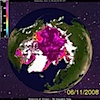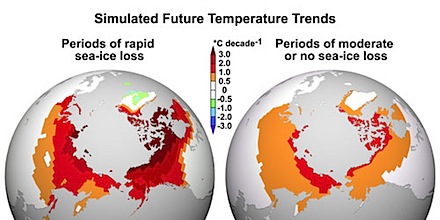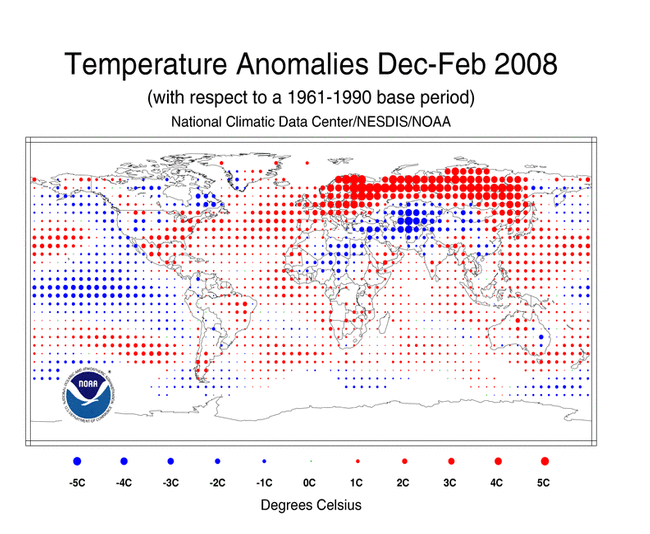 More news from the Arctic. While the German research vessel Polarstern is cruising through the Northwest Passage, the Russian Yakov Smirnitsky is touring the Siberian seas measuring methane – and the news from scientists on board is not good. Igor Semiletov of the Pacific Oceanology Institute of the Far Eastern Branch of the Russian Academy of Sciences told the Itar-Tass news agency (via Bernama):
More news from the Arctic. While the German research vessel Polarstern is cruising through the Northwest Passage, the Russian Yakov Smirnitsky is touring the Siberian seas measuring methane – and the news from scientists on board is not good. Igor Semiletov of the Pacific Oceanology Institute of the Far Eastern Branch of the Russian Academy of Sciences told the Itar-Tass news agency (via Bernama):
“Yet another POI expedition is currently at work in the Arctic, along with ours. The expedition members are exploring the Lena River mouth, where we discovered abnormally high concentrations of methane last year. POI researchers have already carried out 47 studies and confirmed as follows: the concentration of methane in water and the atmosphere increases at a rapid pace, which is indicative of the break-up of permafrost on the shelf of Arctic seas.”
Refer to my last post on the subject and the comments here for some discussion of what that might mean. It’s not good news.
[Update 28/7: I love the internet. This morning I stumbled on a link to a Swedish team working on the Yakov Smirnitsky. Their blog is well worth a visit, if only for the amusing Google translations of the Swedish originals… Hat tip to a commenter at Eli’s warren.]
[Update 31/7: Magnus at Eli’s place links to a news item on the Swedish team’s gas measurements – Google translation here…
This year’s Swedish-Russian expedition has found three new areas in western and eastern Laptev Sea where the concentration of methane is clearly increased, both in water and in the air. In addition, the scientists could measure up significantly elevated in the vicinity of Lenaflodens outflow, which Semiletov past have made similar observations.
The news gets worse.]




